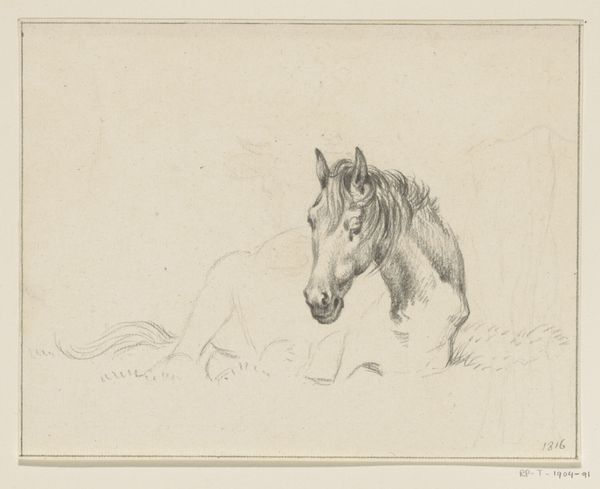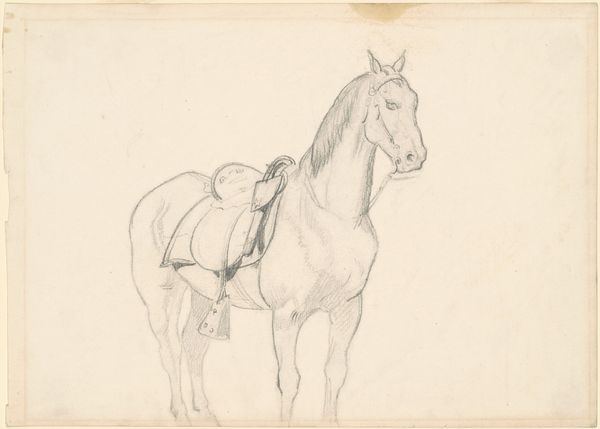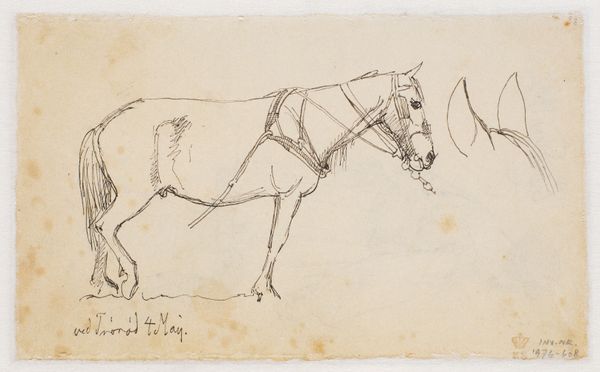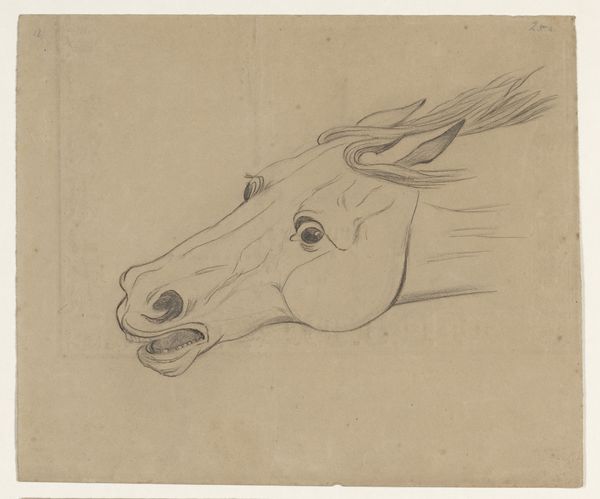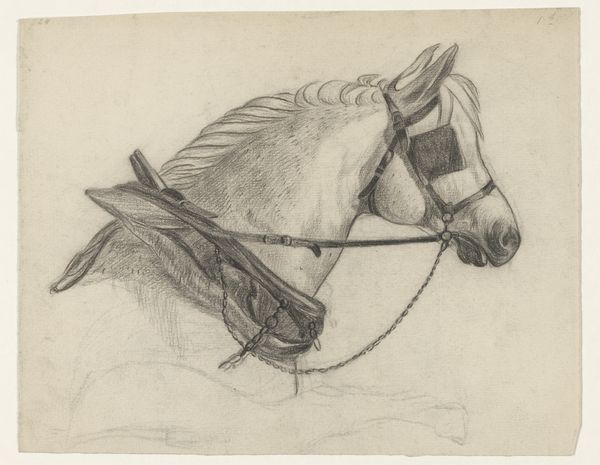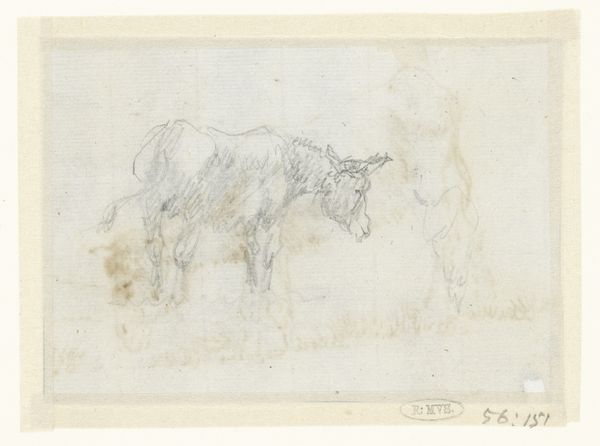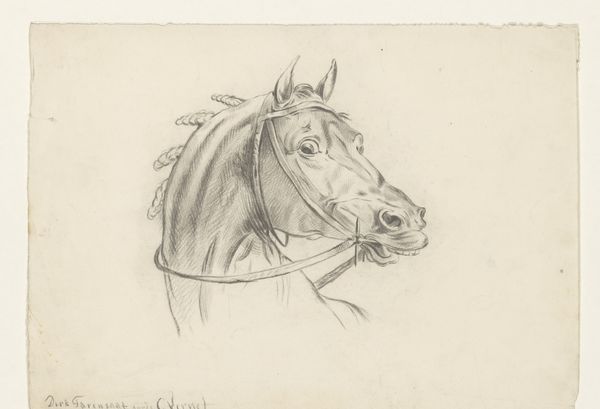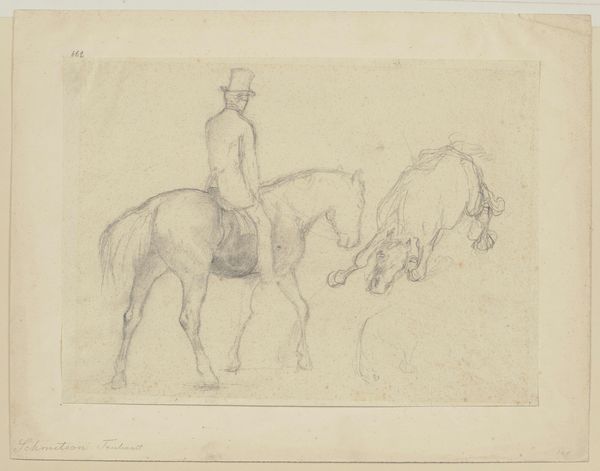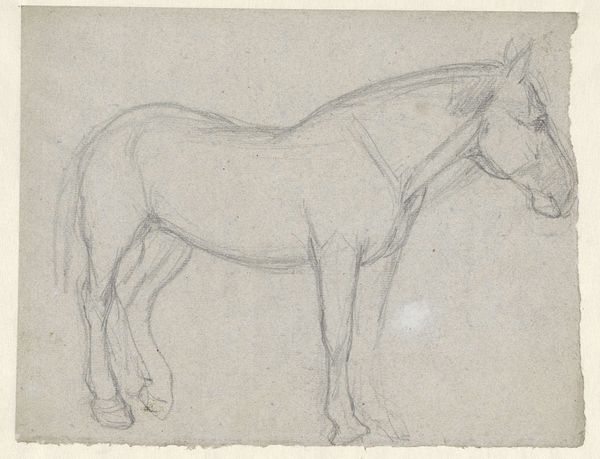
drawing
#
drawing
#
amateur sketch
#
toned paper
#
light pencil work
#
pencil sketch
#
incomplete sketchy
#
possibly oil pastel
#
underpainting
#
watercolour bleed
#
watercolour illustration
#
watercolor
Dimensions: 159 mm (height) x 220 mm (width) (bladmaal)
Wilhelm Marstrand made this drawing, “Horse and Horse Head,” using pencil on paper. Sketches like this offer art historians a privileged insight into the artistic process, revealing the artist's initial ideas before they are worked into a more finished form. Made in Denmark, we can see how this study could contribute to history painting, where horses were often potent symbols. Equestrian portraits, for example, were traditionally associated with power and status, often used to depict military leaders and royalty. Marstrand lived during a period of significant social and political change in Denmark, including the transition from absolute monarchy to constitutional democracy. Did the artist want to make a statement on traditional forms of power? To fully understand this work, one could research Marstrand’s training at the Royal Danish Academy of Fine Arts. The Royal Danish Academy of Fine Arts played an important role in shaping the artistic landscape of the time. Archival material might reveal the institutional pressures and artistic conventions that influenced Marstrand's work.
Comments
No comments
Be the first to comment and join the conversation on the ultimate creative platform.
